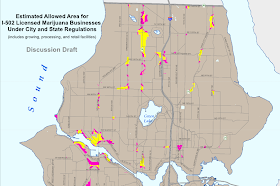I think that before I started farming I had a vision of what a farm would be like. A typical day might be something like get up, check on the animals, check the fences, eat breakfast/read paper, do chores/run errands, check on the animals in the afternoon, go home.
And I thought that maybe there would be binge work, like during haying season, long days for a few weeks a year, sort of related to harvesting mostly. Picking the corn, or pumpkins or whatever.
And I had some idea that in order to have animals I'd have to raise them from babies or chicks or poults; that I'd probably have to kill animals now and then, and that I'd get really dirty from time to time, which I really actually like. Nothing better than washing a hard days work off in the shower and being good-tired.
I actually like working on something alone; and I thought there would be long periods where I was working on something alone, and all of that appealed to me.
So the first year of my farm was kind-of that way. I wasn't producing much in the way of anything, and there was a bunch of work setting up the farm. I had purchased bare, fairly swampy wet ground, and I had to build everything from scratch, but I enjoyed that part.
In the 2nd year I started selling things to people, and had more and more interactions with customers. It got to the point where I had a hard time doing work sometimes; I like to talk to people, and it was hard to say to them "hey, I've got to get this done before dark, so I have to go now", so I found myself working until after dark many days over the next few years, and as the business grew, a lot of the stuff that I liked I didn't get to do much of.
That's the same sort of transition that happens when you have a small business that grows. At some point it grows past the point where you can do all of the work, and so your work becomes managing the people who are actually doing the work. If you get big enough you'll be managing the people who manage the people who do the work, and so on. But I enjoyed the business, and in the 3rd year started hiring help consistently; at first during the peak times, but then generally full-time. Having some production help allowed me to do more things, and I viewed it as a way to get more choice over what I was doing.
Somewhere along there I started having to deal more and more with the disaster my neighbor caused, and with various government agencies; in year 4 and 5, I'd say that 25% of my time was taken up squabbling with one regulator or another, and while I enjoy a good argument, that wasn't on my list at all when I was thinking about farming. In fact, managing people wasn't on my list. And retail sales weren't. When I look back at it, I'd say that 10% of my time was spent on my "ideal" farming activities. I was still busy, but my day-to-day tasks had morphed into something that was not even close to my initial vision.
In fact, where I enjoyed my farm the most was the days when I sent everyone home and it was just me, doing the chores and working on something, and getting dirty and good-tired and clean.
For me, cleaning the farrowing pen and watching the sow enjoy her fresh hay; feeding the pigs that are ALWAYS thrilled to be fed, no matter what, watching the cows chew their cud as I fork over the alfalfa and rub that flat spot just above their tail that they seem to like so much... that's what farming is supposed to be like. And when I feel like I've been chasing my tail all day, I go and chase theirs and it all works out.
































